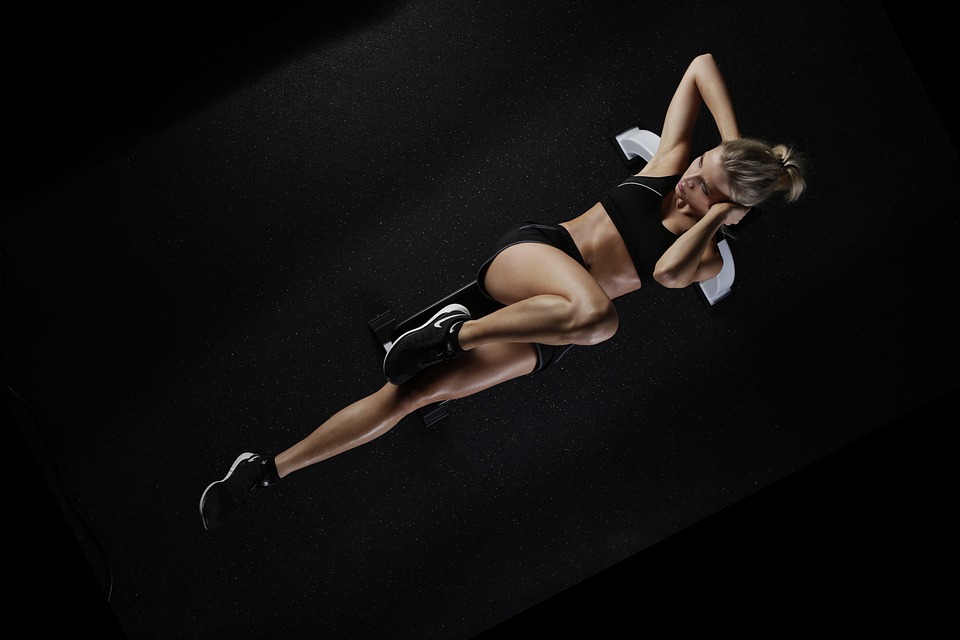
Most casual golfers who encounter pain, or even have a couple of terrible games, assume there’s some problem with their swing. While poor swing mechanics may be the reason, it’s more likely an indication of weakness and inflexibility.
Golf is ballistic, involving sudden moments of exertion. It’s additionally one-sided: Players swing 75 to 100 times from one side of the body, which can often create muscle imbalances and overuse injuries. (If only we were all ambidextrous and could play right on the front nine and lefty on the back nine.)
So before you consult a swing coach, look at your physical fitness. Odds are, the key to a superior game on the links is a better off-the-course training program that creates the flexibility and mobility to execute a proper swing. (Remember: If you think you’re injured, or you’re feeling pain during a workout, immediately stop and consult a doctor.)
Here are ten essential exercises that will help loosen any golfer’s hips, stabilize your shoulders, and help you build power and strength in your golf swing.
1. Seated Rotations
Why you should do it: These will improve your rotational mobility, a vital component of the golf swing.
How to do it: Sit straddling a bench, or squeeze a pad or towel between your knees. Hold a club behind your back with your arms, so it sits in the crook of your elbows. Set your palms flat on your stomach and keep up your stance. Without moving your hips, rotate your torso to the right and hold for two seconds. Return to the beginning position, then proceed to the left and hold for two seconds. Alternate sides, 10 to a side.
2. Standing Ys
Why you should do it: Improves shoulder mobility and furthermore counteracts the negative impact of sitting.
How to do it: Stand bent over at the waist with your back flat and chest up, as though you were going to complete a deadlift. Hold a golf club with a supinated grip (palms looking up). Pull your shoulder blades back and down and raise your arms over your head to form a Y. Return to the beginning position. That is one rep.
Pro tip: Make sure to initiate the movement with your shoulder blades, not your arms.
3. Handwalks
Why you should do it: To keep “golfer’s elbow” and decrease the risk of shoulder damage.
How to do it: Start standing up. Bend forward at the waist and set your hands on the ground, so you’re on all fours. Gradually walk your hands out into a pushup position. Then, making sure to keep your knees straight, walk your toes toward your hands.
Once you’re beginning to feel a stretch, walk your hands back out and repeat for a total of 10 reps.
4. 90/90 Stretch
Why you should do it: This move opens up your shoulders, building flexibility and mobility.
How to do it: Lie on one side with the bottom leg straight, and the top leg bent with the inside of knee on the ground. Rotate your trunk back attempting to put the top shoulder blade on the ground. Hold two seconds, return to beginning position and repeat for ten reps. Switch sides.
5. Lateral Pillar Bridge
Why you should do it: This opens up the hips, preventing back pain.
How to do it: Lie on one side with your body in a straight line and your elbow under your shoulder, feet stacked. Push your hip off the ground, making a straight line from ankle to shoulder. Hold this stance for three seconds. Complete ten reps on one side and after that ten on the other side. Make sure to keep your head in line with your spine—don’t sag or bend.
6. Medicine Ball Parallel Throw
Why you should do it: Medicine ball throws will enhance your ability to store and release energy and improve your swing speed.
How to do it: Stand facing a solid wall (so, not glass or sheetrock) around 3 feet away. Hold a medicine ball at waist level. Rotate your trunk far from the wall. Then, in one motion, start the throw by thrusting your hips toward the wall, followed by your chest, arms, and the ball. After the ball bounces off the wall, catch it with one hand under the ball, the other hand behind it, and arms slightly twisted. Repeat for ten reps, then switch sides.
7. Medicine Ball Perpendicular Throw
Why you should do it: This will build up your core power, which will help your swing speed and muscle balance.
How to do it: Perform this like the medicine ball parallel throw, expect to begin with your hips perpendicular to the wall. Rotate your torso 90 degrees away from the wall, and then rotate 180 degrees and throw the ball at the wall, catching it on the bounce back.
Repeat for ten reps, then switch sides.
8. Physioball Pushup
Why you should do it: Pushups on a physioball challenge the scapular stabilizers, which are vitally crucial for shoulder and back movement.
How to do it: Start in a pushup position, with your hands on a physio ball and feet on the floor. Lower yourself, so your chest barely touches the ball. Control the ball as you push up, pushing your chest as far from the ball as possible. Complete a set of 10.
9. Dumbbell Bench Press – One Arm
Why you should do it: This movement not only builds strength as well as shoulder stability.
How to do it: Lie down on a bench, with your left glute and left shoulder blade on the bench and right glute and right shoulder blade off the bench. Hold a dumbbell in your right hand and hold on to the bench above your head with your left hand. Gradually lower the weight until your elbow is horizontally level with your shoulder. Return to the starting position. Finish ten reps and switch sides.
10. Glute Bridge
Why you should do it: It may look awkward, but the glute bridge is ideal for activating those muscles you’ve been sitting on throughout the day before hitting the links.
How to do it: Lie face-up on the floor with knees bent 90 degrees and feet flat on the floor. Squeeze a rolled up towel between your knees. Fire your glutes and bridge your hips toward the roof, so that only your shoulders and heels stay on the ground. Lower your hips to the ground and repeat for ten reps.





